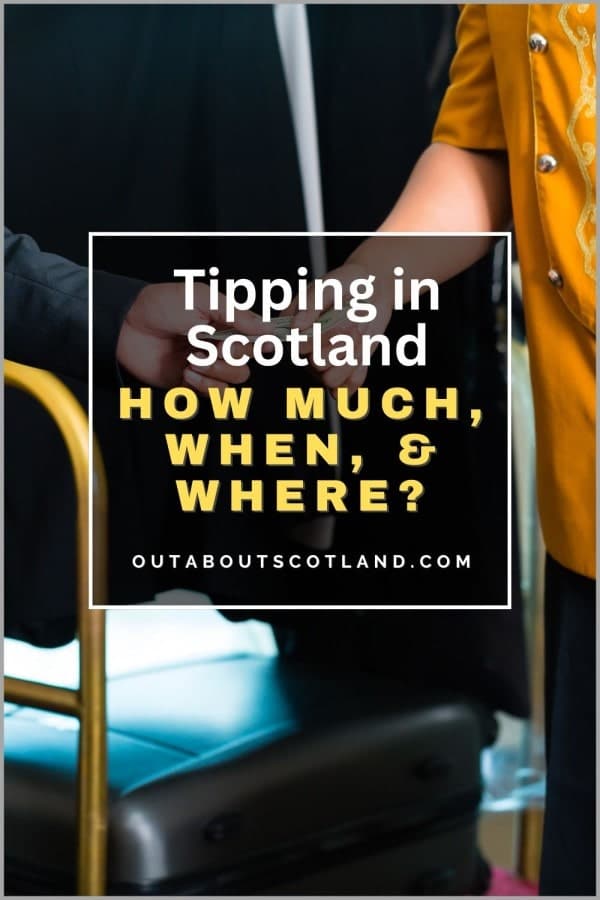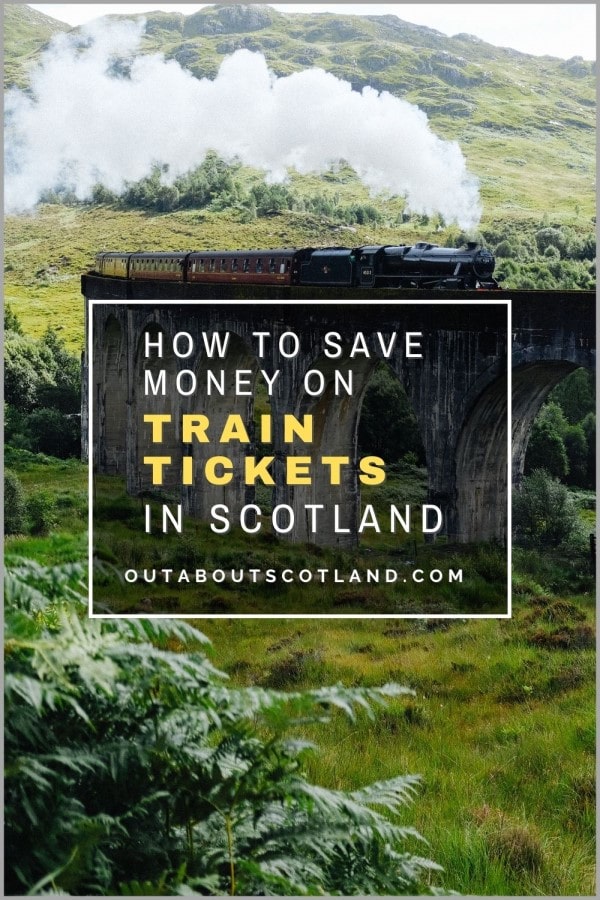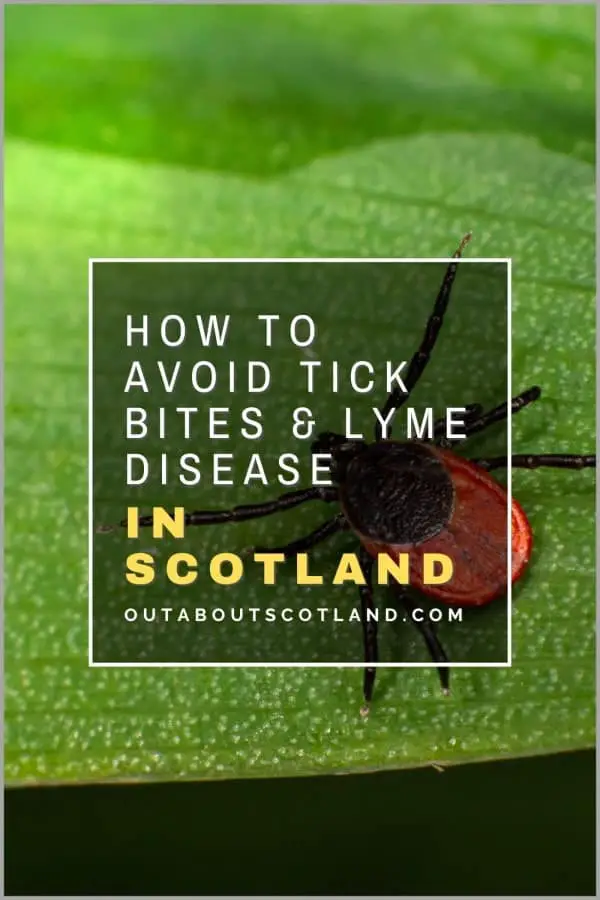Scotland can be an expensive place to visit, and unfortunately, the price of everything from admission tickets to petrol seems to be reaching new wallet-destroying levels with each passing year. In this article, you’ll discover tips and tricks to save money on a trip to Scotland, whether you’re travelling by car or train, staying in a top hotel or a budget hostel, eating in a posh restaurant, or snacking on a takeaway burger.
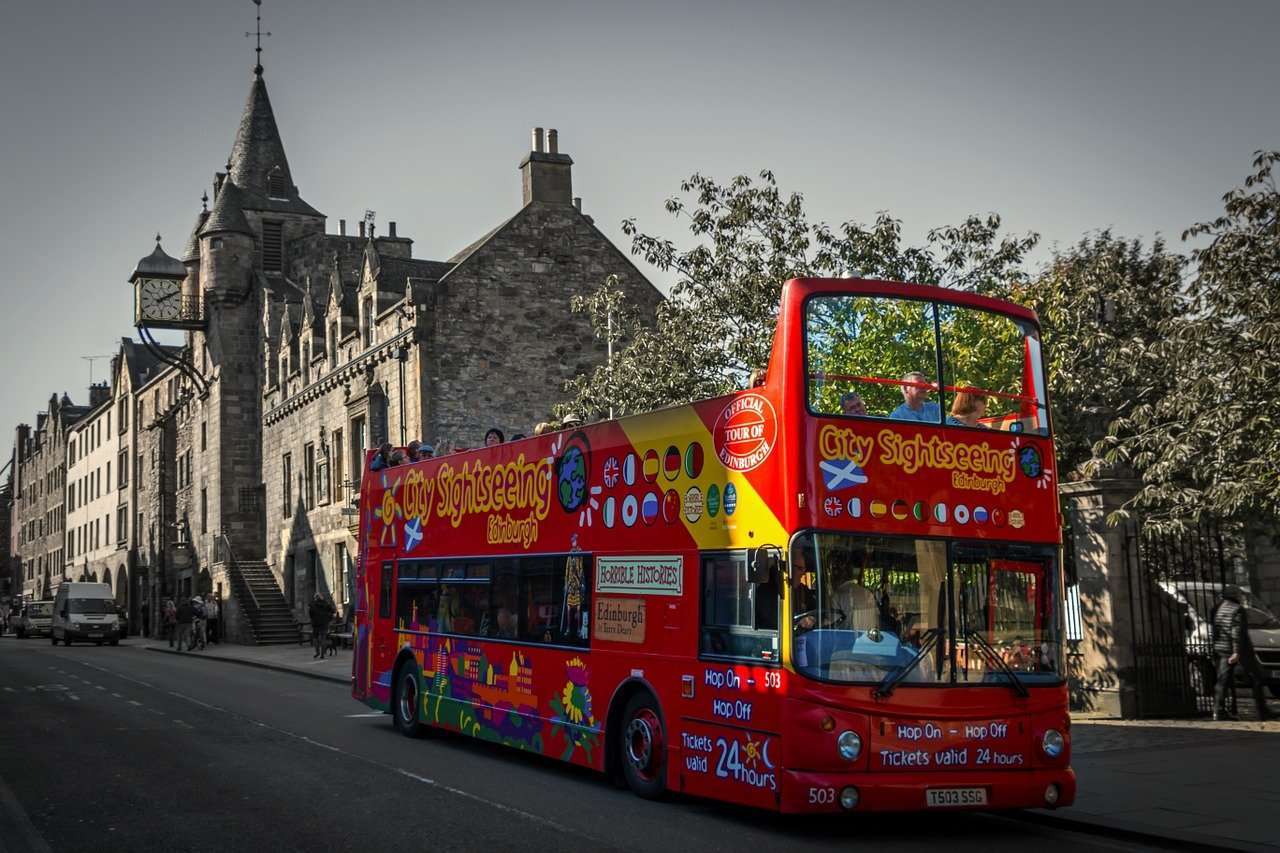
Tips to Save Money on Car Travel in Scotland
Cars open up many sightseeing opportunities, but unfortunately, they’re not without their drawbacks, especially if using a rental car. The biggest downside to using a car is the fact that Britain’s fuel prices are steep, and you can expect to pay around £60 to fill up a medium-sized hatchback, which might give you 500 miles of driving.
Bear that in mind on a road trip, as a route from Galashiels in the Borders to Thurso in the north via Edinburgh, Glasgow, Skye, and Inverness is 450 miles alone, and that’s without deviating east to the Cairngorms, Speyside, or anywhere on the east coast.
Let’s take a look at a few money-saving tips that will help you get a few more miles out of each of your hard-earned pennies.
1: Make sure your tyres are at the correct pressure which can save 5% in fuel costs compared to under-inflated tyres.
2: Drive at a consistent speed and try to stay under 70mph (which is the maximum legal speed limit in Scotland anyway). Driving at 80mph uses 25% more fuel than driving at 70mph and driving at 70mph uses 9% more fuel than driving at 60mph.
3: If you’re filling your car with half your house for an extended road trip you might consider de-cluttering a bit as fuel efficiency is reduced by 2% for every extra 45 kg you transport.
4: Remember that some areas of the Scottish Highlands are less populated than the Steppes of Russia and you will usually be miles away from a petrol station.
If you run out of fuel and don’t have cover with AA or RAC you’ll have to pay upwards of £200 for an independent garage to pick you up. My recommendation is to look for places to refuel when you are near 1/3 of a tank.

5: If you’re travelling around Scotland by car, you can always save a few quid by searching online for the cheapest local petrol stations. Check out PetrolPrices.com for a regularly updated list of garage and supermarket fuel prices. As a rule of thumb, fuel in the Highlands and the islands is 10–20% more expensive than in the south of the country.
6: If you get a hire car book direct with the hire car company instead of a broker, as although you’ll hear claims of 20-30% savings with brokers they’re almost always more expensive than reputable companies like Hertz or Avis.
7: A favourite sales tactic of hire car companies is to reel you in with cheap rental costs but hide in the small print that the price includes a large down payment unless you take out additional insurance. Don’t be surprised if you refuse the extra insurance and then get asked to hand over £1,000 or more as a deposit.
8: If you get a hire car make sure you fully read the documentation regarding collision waiver damage which is often pushed on unwary tourists but is usually accompanied by a long list of get-out clauses, making the cover next to useless.
9: If you’re using a hire car pick it up and drop it off at the same location because most hire car companies add on an additional (extortionate) fee if you use different branches. Sneaky…
10: I guarantee whichever company you go with they’ll try and push upgrades on you which are almost always unnecessary. Most of these ‘upgrades’ come in the form of extra insurance as that’s where the salesman makes the most commission, so thoroughly read the documents and consider if you really need it.
Tips to Save Money on Rail Travel in Scotland

The best way to save money on train tickets in Scotland is to get an all-in-one pass for the main railway lines that run through the country. Your options depend on where you want to go and how much you want to see during your visit, so I’ll list the main passes below.
The Spirit of Scotland travel pass offers unlimited rail travel throughout Scotland for either four or eight days. This is a great value option as pass holders benefit from train, ferry and coach use and journeys are completely flexible with the bonus that there’s no need to book in advance.
If you intend to explore Scotland I highly recommend this option for the flexibility it offers, especially if you’re heading to the northern islands where you’ll get 20% off ferry travel to Orkney and Shetland (the only money-saving offer for getting to those islands that I’ve found so far).
The pass allows you to travel across every region of the country so if you’re going on an epic tour this pass is ideal, although if you’re sticking to a single area you will probably be better off getting single tickets.
One very much appreciated aspect of the Spirit of Scotland pass is that it also includes coach travel with Citylink, Stagecoach, and West Coast Motors, which is something I guarantee you’ll find handy in winter when Scotland’s railways are constantly disrupted by snow on the track. You also get subway and tram travel in Glasgow and Edinburgh, plus there are discounts of up to 20% on taxi hire in Glasgow and Edinburgh and Loch’s Ness and Lomond boat cruises.

The Highland Rover travel pass gives you four days of unlimited travel over eight consecutive days across the Highlands from Glasgow to the far northern town of Thurso (20 miles west of John O Groats). This pass is very useful if you want to concentrate your visit to the Scottish Highlands but it’s also a great option for visiting Skye as the Kyle Line runs to Kyle of Lochalsh where you can easily cross the Skye bridge to get onto Scotland’s most famous island.
Alternatively, if you don’t think you’ll have time for Skye, Eilean Donan Castle is 9 miles east on the A87 from Kyle of Lochalsh or you could stick to the West Highland Line which starts in Glasgow and finishes in the west-coast village of Mallaig which is a lovely wee fishing port.
Although the Highland Rover pass is only valid for standard class you can travel at any time and you’ll get 20% off Northlink Ferry services to Orkney and Shetland which makes this pass a perfect way to see the north of Scotland.
The Central Scotland Rover travel pass lets you take unlimited journeys between Glasgow, Edinburgh, and the surrounding area for three days and it’s valid for standard class journeys on ScotRail trains, but you can’t use it on the new Borders railway line.
This is the pass to get if you want to combine Glasgow and Edinburgh in one visit as it only takes an hour to get between the train stations, meaning you could base your hotel in either city and easily travel between them whenever you feel like it.
The only negative I have is that while the pass includes unlimited travel on Glasgow’s SPT subway it doesn’t include Edinburgh’s Lothian buses which means you’ll have to fork out an additional £5 for an all-day ticket in the capital. That being said, Edinburgh is so compact you can easily cover it on foot so taking the bus isn’t necessary anyway.
One additional pass I recommend you get if you’re concentrating on Edinburgh is to get yourself a Borders Explorer pass which is a new joint venture between ScotRail (link to the ScotRail tickets page) and Borders Buses. The Scottish Borders have some of the most picturesque villages in Scotland along with exceptionally pretty countryside and to my mind it’s one of the most under-appreciated regions of the country.
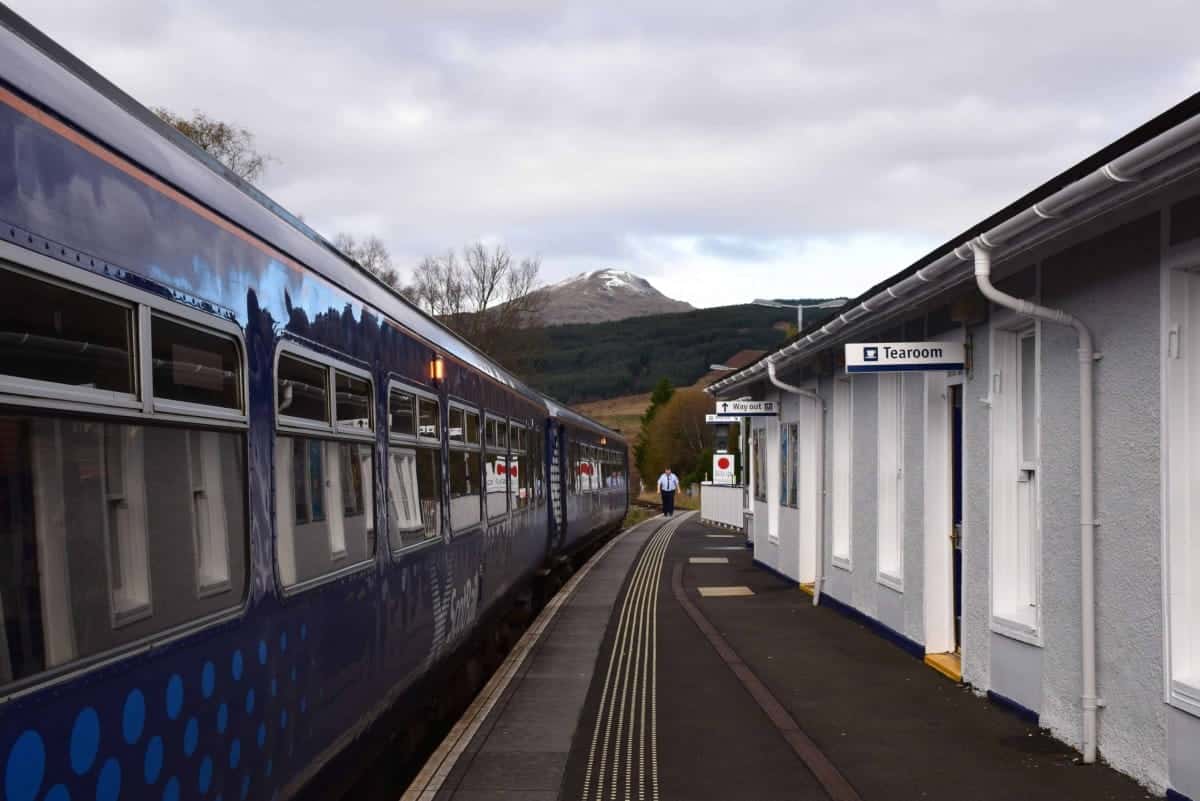
The pass includes return rail travel from Edinburgh to Galashiels and unlimited bus travel with Borders Buses.
Everything is much more spread out in the Scottish Borders than the area surrounding Edinburgh, but if you do manage to get yourself to Galashiels two very highly rated attractions nearby are Abbotsford House which was the family home of Sir Walter Scott and Dryburgh Abbey which is a very atmospheric ruined medieval abbey not far from the River Tweed.
I’ve included lots of guides to tourist attractions in Edinburgh and Glasgow on this website, as well as several all-in-one articles that cover the highlights, so please click around to get a taste of what’s on offer.
Now that I’ve covered the main rail passes I’ll offer a few more suggestions for saving money on Scottish rail travel.
1: Travel during off-peak instead of the much more expensive peak times. Peak times with most rail operators are; 6 am to 10 am, and 4 pm to 8 pm Monday to Friday.
2: If you’re visiting Glasgow use the subway system which is both efficient and reasonably priced. The SPT Roundabout ticket gives one-day unlimited travel by rail and subway to over 110 stations in the Greater Glasgow area. You can purchase these tickets through ScotRail or SPT Travel Centres.
3: Unless you really have to, steer clear of first-class tickets. The additional cost over standard class is around 80-100% and while you may get free coffee, snacks and a comfier seat you’ll get to the destination at the exact same time, and ScotRail carriages are pretty decent in standard class anyway.
4: If you can, try to book your tickets as early as possible. Rail operators tend to release tickets 12 weeks in advance and the cost slowly rises the nearer you get to the day of travel.
5: Following on from the above, if you do end up getting your ticket on the day of travel always check The Trainline website first as they’re almost always 10-30% cheaper than getting the same ticket at the station.
6: Another great website for booking tickets is Red Spotted Hanky which searches for the best deals for you and even offers split tickets where the same journey is split into two or three consecutive tickets which works out much cheaper than getting a single ticket from A to B.
Tips to Save Money on Hotels in Scotland
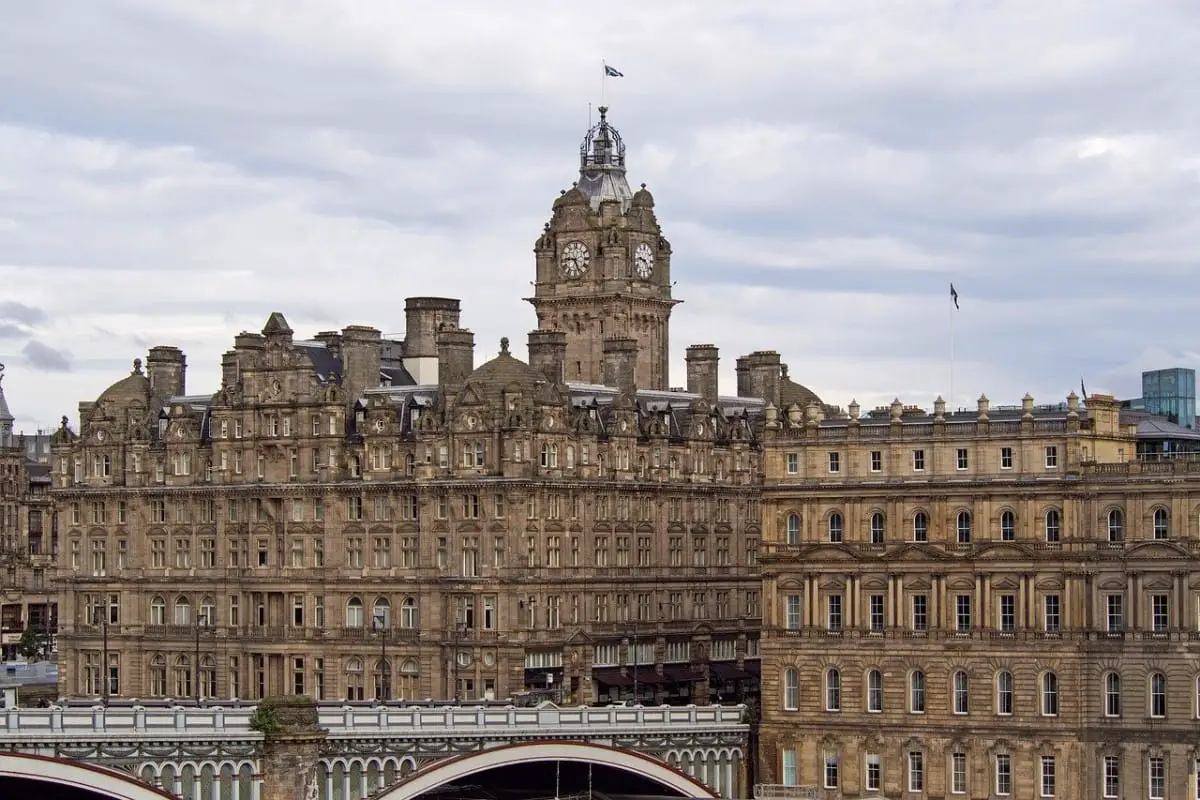
One of the biggest expenses you’ll find for a holiday in Scotland is accommodation, although costs can vary wildly depending on where you’re staying.
Edinburgh and Glasgow are the worst offenders, as they like to cash in on the crowds of tourists that flock to both cities, but you’ll also experience rip-off prices in the islands, especially Skye, which has become a bit of a victim of its own success in that regard. Even so, it’s possible to save money by booking rooms in areas that are slightly outside the main tourist hotspots, which can save up to 50% on the cost.
An example of this is Travelodge, which will happily charge around £150 for a mid-summer city centre budget room in Edinburgh, compared to around £60 for the same room 16 miles away in Livingstone. If you can get a room within walking distance of Livingstone train station, you’ll be able to get to Princes Street in around 30 minutes on a return ticket costing less than a tenner.
The second-biggest factor in determining how much you pay for a room is the season, and there’s no getting around the fact that prices can double or even triple from the depths of winter to the heights of summer.
There’s not much you can do about seasonal price changes but you can grab some real bargains if you’re not fussy about the time of year you travel, meaning an all-inclusive 5-star city-centre hotel could be within reach if you’re prepared to put up with Scotland’s (mostly) dreary weather in autumn or winter.
You’ll find a few examples of summer/winter hotel prices in the table below.
| Edinburgh city centre hotel (2 adults sharing per night) mid-August | Rating | Cost |
| The Balmoral Hotel | Luxury | £450 |
| Old Waverley Hotel | Mid Range | £200 |
| easyHotel Edinburgh | Budget | £110 |
| Edinburgh city centre hotel (2 adults sharing per night) mid-January | Rating | Cost |
| The Balmoral Hotel | Luxury | £280 |
| Old Waverley Hotel | Mid Range | £100 |
| easyHotel Edinburgh | Budget | £40 |
Here are a few more tips for saving money on accommodation in Scotland.
1: Although the cheapest time of year is winter, in some cities like Edinburgh the prices will ramp up again the nearer you get to Christmas due to the Christmas markets and festivals. If you’re after a cheap holiday check the prices in early January when hotels are desperate for business.
2: Two suggestions for saving money on chain hotels like Marriott is to book via their own website which is often cheaper than any price comparison site, and join their loyalty points scheme while you’re there. Most of these schemes build points for each stay which you can later redeem for rewards such as a free meal in the hotel restaurant or a free overnight stay.
3: It might seem best to choose a hotel in the city centre but often the cheapest hotels are located near the airport. There’s almost always a great public transport system in place to get you from the airport hotel to the city centre and many of the larger hotels offer free bus drop-off and pick-ups throughout the day.

4: Hostels are by far the cheapest option for cheap accommodation in Scotland, and the days of sticky carpets and cold, dingy rooms are long gone. Most even offer single rooms with an en-suite bathroom these days. In Edinburgh, take a look at the Edinburgh Backpackers Hostel, and in Glasgow, I recommend the Glasgow Youth Hostel.
5: Another alternative for cheap overnight accommodation is to find a Groupon deal. The only thing to bear in mind is you’ll likely have to book well in advance so it’s no good for an impromptu overnight stay.
6: Airbnb is a fantastic option for the budget-conscious traveller and there are some real bargains to be had, plus you can cook your own meals, saving even more money. A recommended alternative to AirBnB is Vrbo.
7: Even cheaper than hostels and Airbnb, pitching a tent in Scotland’s beautiful countryside. It’s legal to pitch your tent wherever you like (as long as it isn’t privately owned land) in Scotland, but make sure you abide by the Scottish Outdoor Access Code.
8: A bothy is a little dwelling seemingly abandoned in the middle of nowhere for no apparent reason which has been erected for anyone to take refuge in at no cost. Although they’re not exactly up to hotel standards they’re completely free to use, so check out The Mountain Bothies Association for more information. Another great resource is The Scottish Bothy Bible which you can buy on Amazon.
Tips to Save Money on Food and Drink in Scotland
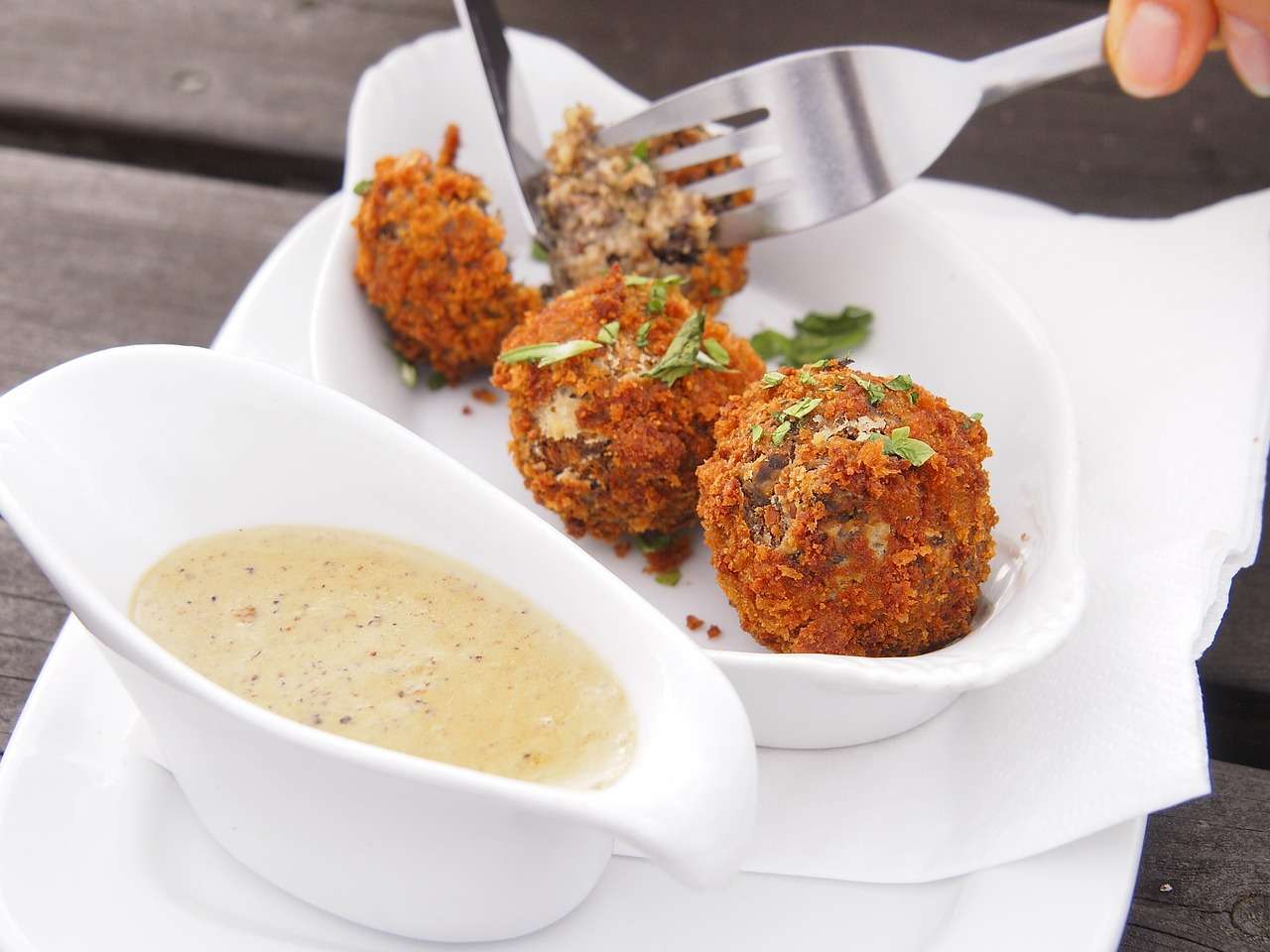
After hotels and travel costs, the next biggest spend is likely to be food and drink depending on the type of holiday you’ve booked. A city-centre hotel stay in The Balmoral for example, is going to cost you a lot of money if you eat in the hotel every night, compared to heating a tin of sausages and beans over a stove on a Highland camping trip.
The following table gives you a rough guide to average food prices in Scotland.
| Breakfast | Price |
| Scottish fried breakfast – hotel (upper-range option) | £15 |
| Scottish fried breakfast – pub chain e.g. Wetherspoons (mid-range option) | £8 |
| Scottish fried breakfast – street van (cheap option) | £5 |
| Snacks | |
| Ham sandwich – hotel (upper-range option) | £10 |
| Ham sandwich – pub chain e.g. Wetherspoons (mid-range option) | £5 |
| Ham sandwich – Supermarket (cheap option) | £2 |
| Lunch/evening meal | |
| Fish & chips – hotel (upper-range option) | £25 |
| Fish & chips – pub chain e.g. Wetherspoons (mid-range option) | £12 |
| Fish and Chips (cheap option) | £8 |
In my experience, the only guaranteed way to save money on food and drink in Scotland if you’re staying in a city is to book accommodation in an Airbnb which has a kitchen where you can prepare your own food.
It’s not quite as simple if you’re visiting Scotland’s islands as most supermarkets are Scotmid which are anywhere between 10 and 20% more expensive than their mainland counterparts. My recommendation in that scenario is to do your food shopping before you board the ferry.
Scotland’s mainland supermarket prices are no different from anywhere else in Britain so if you cook for yourself it shouldn’t cost any more than if you were at home, and if you change your supermarket shopping habits to a discount brand like Lidl or Aldi you could even save money.
Of course, if you’re on holiday you’ll no doubt want to have at least a couple of days when someone else does all the cooking and washing up, so I’ve listed a few eating-out money-saving tips in the section below.
1: If you’re anywhere near a town or city you can often find great deals on eating out on the Itison and Groupon websites. Just remember that you’ll have to book in advance, but if you’re planning a trip out it’s a great way to have a slap-up meal for up to 50% cheaper than the normal price.
2: While you’re browsing the above discount sites, keep your eyes open for Prezzo vouchers. Prezzo is very aggressive with their discounts, and you will often find three-course meals for two,with a drink,for £20, which is one of the cheapest mid-range restaurant deals you’ll find in Scotland.
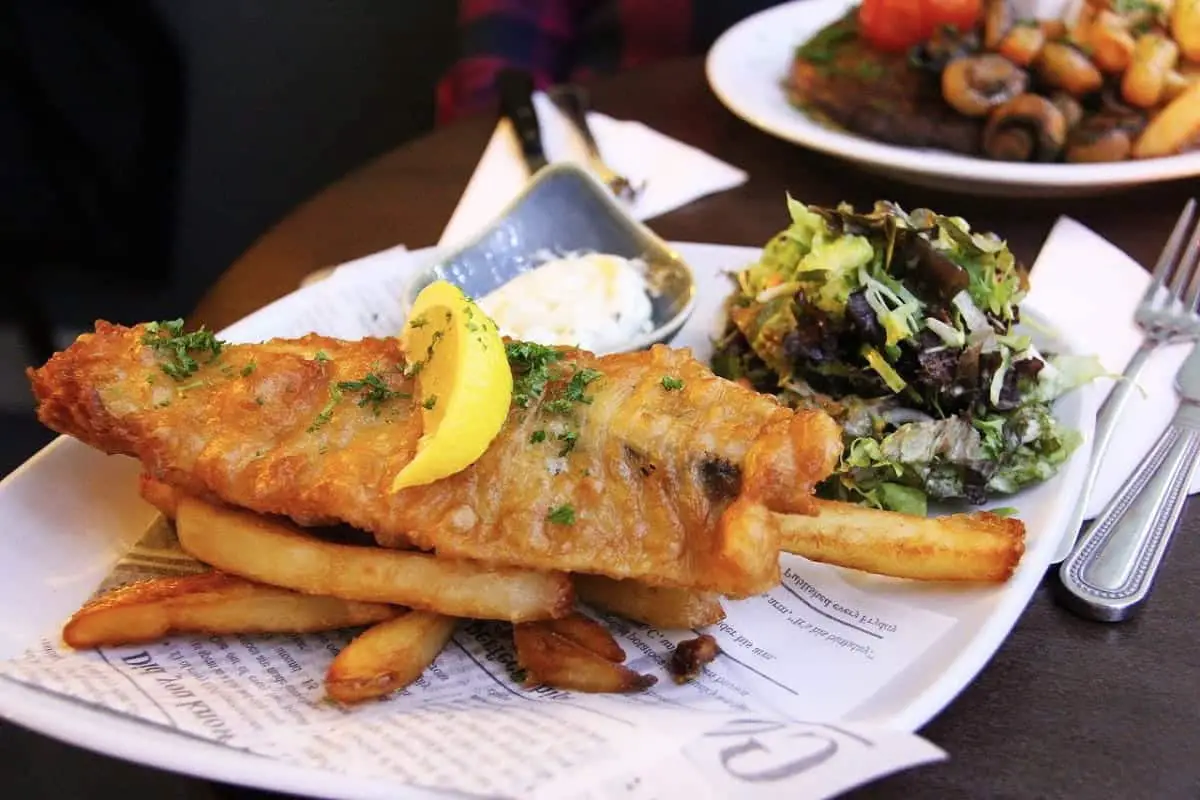
3: If you’re dead set on eating out don’t forget about the Meerkat Meals app which gets you two meals for the price of one at thousands of restaurants throughout Scotland. All you need to do to be eligible is purchase any insurance from comparethemarket.com, so you can get a 1-day UK travel insurance plan for £2 which will give you 12 months of discount offers.
4: There are also voucher apps like Voucher Cloud which automatically find the nearest restaurants near you using your phone’s GPS and then automatically find the latest discount vouchers that you can use to save money on your meal. Remember that many restaurants require you to inform them of the voucher before ordering the meal.
5: Students usually get great discounts at restaurants by showing their student ID at participating restaurants like Pizza Express which offers 30% off food and drink, but other groups can also save money such as emergency services and military staff with the Blue Light card.
6: If you’re anything like me you can’t go more than five minutes without a caffeine fix, so do your wallet and the environment a favour by using your own reusable coffee cup. Most coffee shops offer a discount on your drink when you use them.
7: Similar to the tip above, take your own water bottle and fill it up with tap water instead of buying mineral water. You’ll find most bars and restaurants now have free water bottle refilling stations as they are legally obliged to serve tap water free of charge.
8: Fancy a wee dram? Many independent pubs in Scotland have a malt of the month that has a discount of 30-50%. These are usually advertised behind the bar.
Tips to Save Money on Tourist Attractions in Scotland
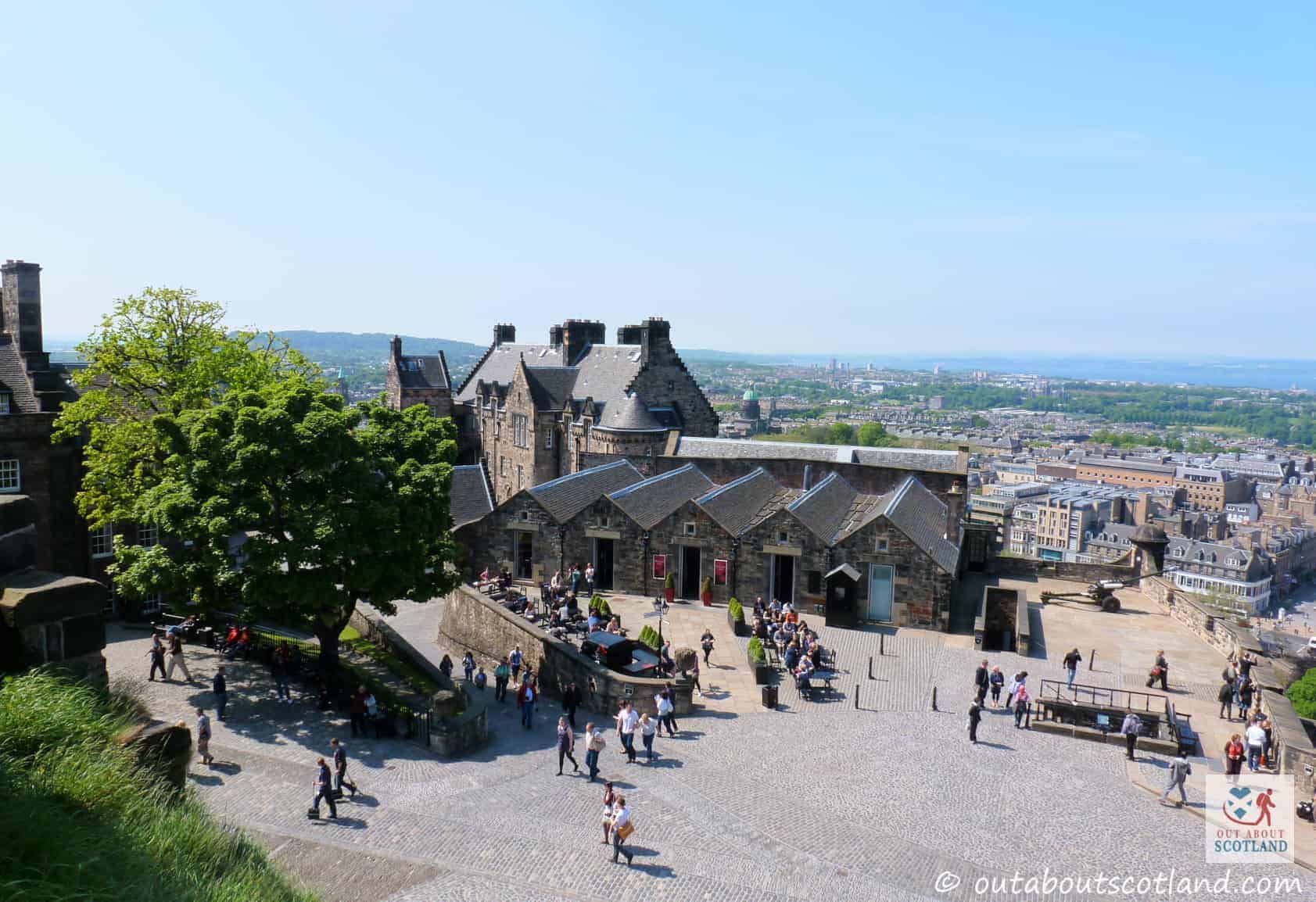
Unlike food, travel and accommodation, it’s quite difficult to get discounts on tourist attractions in Scotland as there’s generally a steady stream of visitors no matter the month.
You’ll find most attraction operators have fixed prices throughout the year so choosing your city break in winter instead of summer will make no difference to your admission ticket prices. In fact, many of Scotland’s top attractions are downright extortionate, and you’ll have to have deep pockets for a weekend with the family in Edinburgh where entry to the biggest attractions like Edinburgh Castle will set you back around £50 for a family of four.
I’ve created guides about How Much it Costs to Visit Scotland and Visiting Scotland on a Budget that will offer you more suggestions for saving money on attractions, but the majority of the information is distilled into the list below.
1: If you like exploring Scotland’s great outdoors, get yourself a National Trust for Scotland membership which includes free car parking at all their sites along with free admission to historic buildings. The roster of historic places isn’t as good as Historic Environment Scotland, but they do have a few notable exceptions, including Brodick Castle on Arran and Gladstone’s Land in Edinburgh.
2: As above, but with Historic Environment Scotland which cares for the majority of Scotland’s historic places. I have a joint annual membership and there are so many places to visit I usually make my money back within a couple of months of renewing. As an example, Edinburgh Castle is around £18 per adult ticket but admission is free when you flash your HES membership card, plus you’ll breeze past the horrendously long queues.
3: If you take the bus in Edinburgh or Glasgow keep hold of your ticket as the reverse side often has a printed special-offer code for 2-for-1 entry to attractions.
4: The one website I return to over and over again to pre-purchase tourist attraction tickets is Tiqets. They have an ever-changing selection of top attractions on their site and frequently have discounts of 30% or more.
5: For guided tours, you have a few options, but my recommendation first and foremost is to take a look at the Get Your Guide website which has hundreds of tours throughout Scotland, from Edinburgh and Glasgow to the Highlands and Islands.
6: A free alternative is to contact one of the guided tours that offer trips around Scotland’s top attractions for a voluntary donation. Examples are The Glasgow Necropolis which has fascinating history tours and Edinburgh Free Tours which will take you on a 2-hour tour of the city centre for absolutely no cost.
7: Speaking of Edinburgh, the Edinburgh City Pass is an all-in-one ticket that allows entry to 22 top attractions over one, two, or three days. It’s a great deal if you manage to fit in lots of attractions during your visit, but be aware that some are quite a distance outside the city centre, like the Scottish Seabird Centre, which is over 25 miles away in North Berwick.
8: If you’re in Edinburgh you’ll find most of the top attractions are completely free anyway. Edinburgh is home to most of Scotland’s national museums and galleries and I can confirm they’re superb places for tourists on a budget. The highlight is The National Museum of Scotland which is opposite Greyfriars Kirk, but The National Gallery of Scotland is pretty good too.
Resources
Hostelling Scotland. Staying in a youth hostel isn’t for everyone but it’s by far the cheapest way to spend a weekend in Scotland’s cities. The Hostelling Scotland organization has been going for over 90 years and their website is easily the largest internet resource for hostels in Scotland.
Edinburgh City Pass. If you’re visiting Edinburgh you’ll save a packet on paid attractions by getting a city pass which includes pre-paid entry to most of the top attractions. If you’re travelling elsewhere you’ll get free entry to historic places with membership to the National Trust for Scotland.
The Trainline. The Trainline is the UK’s favourite train ticket booking service, mainly due to the fact they make the process so easy. Not only that but you’ll usually get a big discount by purchasing your ticket through them – sometimes up to 60% or more compared to buying at the station.
Vouchercloud. This is the top money-saving app in the UK. Sign-up is free and the site is updated weekly with over 22,000 vouchers and discount codes for everything from high street shopping to Saturday night take-outs.
Historic Environment Scotland. The largest public body in Scotland that cares for and manages the nation’s most important historic attractions. Membership includes free admission to all HES sites as well as a 20% discount in their shops and cafés.
Frequently Asked Questions
How much does it cost to visit Scotland?
Averages for 1 week per adult in 2021, based in a city centre including food, travel and attraction tickets: Luxury holiday £2610. Mid-range holiday £1753. Budget holiday £835.
Which are the best train lines to tour Scotland?
The West Highland Line – Glasgow to Mallaig. The Far North Line – Inverness to Wick. The Kyle Line – Inverness to Kyle of Lochalsh. The Carlisle Line – Carlisle to Glasgow. The Borders Line – Tweedbank to Edinburgh. The Stranraer Line – Stranraer to Glasgow.
Which railcards can I use in Scotland?
Two Together Railcard: Gives a third off all rail travel on off-peak journeys for any two people over the age of 16 when they travel together.
26-30 Railcard: Gives a third off all rail travel on off-peak journeys for people aged between 26 and 30 years.
Senior Railcard: Saves third off train fares for anyone aged over 60 years.
Highland Railcard: Offers a 50% discount for people who live in the Scottish Highlands.
How much will it cost to fill a hire car in Scotland?
The cost of fuel (as of 2023 according to the RAC website) is around £1.50 per litre of petrol and around £1.60 per litre of diesel.
That means filling up a family hatchback like a VW Golf will cost you an average of £70 to £80, which would give you 400 to 500 miles of driving.
What is a realistic daily budget for Scotland?
Some factors that can affect your daily budget include the length of your trip, the time of year you visit, the type of accommodation you choose, and the activities and experiences you want to have.
For a basic city centre stay in Edinburgh in summer expect to pay (per person) £30 for food, £5 for buses, and £30 for attraction tickets.
What is the cheapest month to go to Scotland?
It’s difficult to say exactly what is the cheapest month to go to Scotland as prices can vary depending on several factors such as the location and type of accommodation you’re looking for, as well as the time of year and any events that might be taking place during your visit.
In general, however, you will likely be able to find lower prices during the off-season, which for Scotland is typically considered to be the winter months from November to February. You may also be able to find good deals during the shoulder season which is typically considered to be the months of March, April, October, and November.


